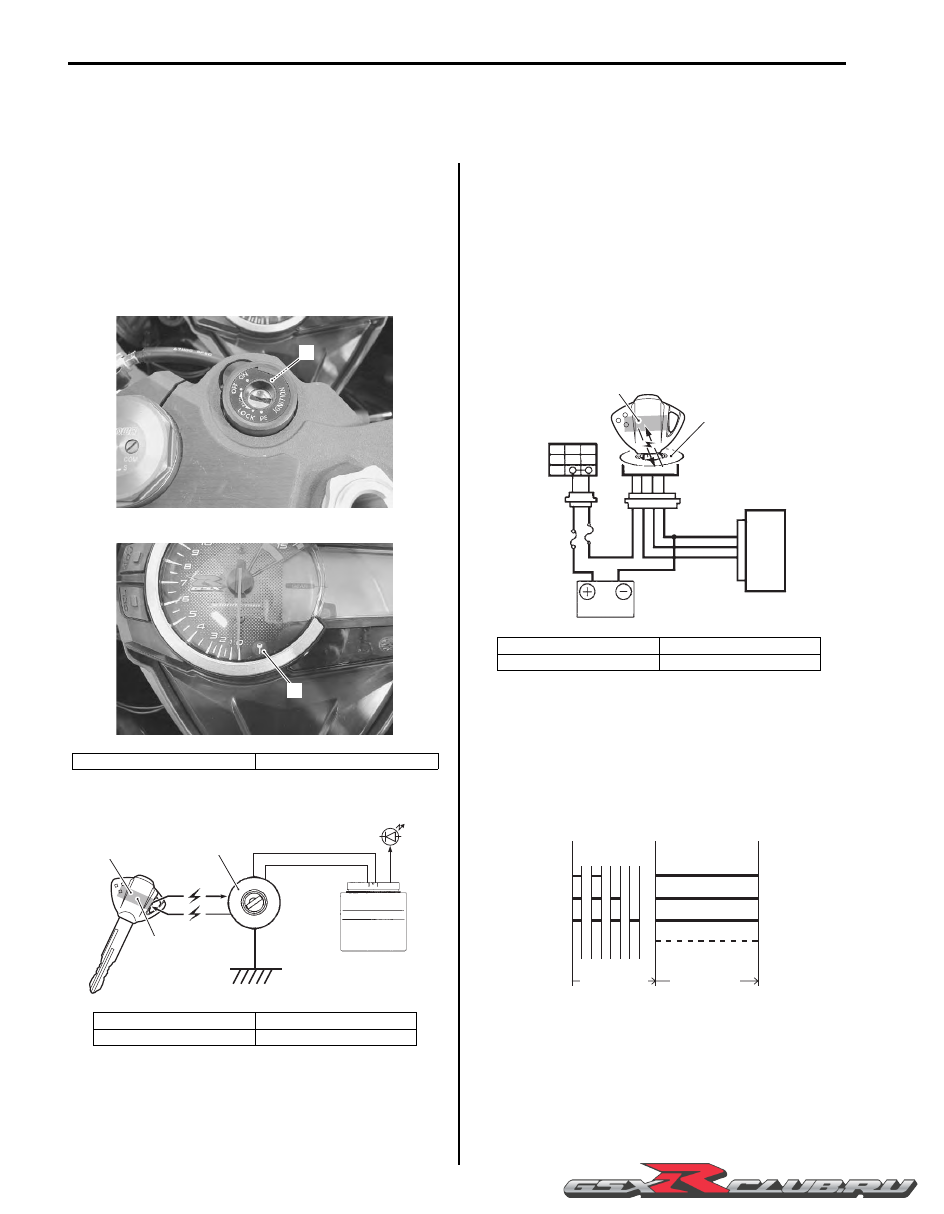Suzuki GSX-R1000. Service Manual - part 24

1H-1 Ignition System:
Engine
Ignition System
General Description
Immobilizer Description (For E-02, 19, 24, 51)
B947H11801001
The immobilizer, an anti-theft system, is installed as a
standard equipment.
The immobilizer verifies that the key ID agrees with ECM
ID by means of radio communication through the
immobilizer antenna. When the ID agreement is verified,
the system makes the engine ready to start.
Operation
When the ignition switch is turned ON with the engine
stop switch in ON, the immobi-antenna and ECM are
powered ON.
The ECM transmits a signal to the transponder through
the immobi-antenna in order to make comparison
between the key ID and ECM ID.
With the signal received, the transponder transmits the
key ID signal to ECM so that ECM can make comparison
with its own ID, and if it matches, the engine is made
ready to start.
Also, when the ignition switch is turned ON, the indicator
light flashes as many as the number of IDs registered in
ECM. Thereafter, if the IDs are in agreement, the
indicator light turns on for two seconds to notify of
completion in successful communication.
If the indicator light (LED) flashes fast, it notifies of
communication error or disagreement of ID.
1. Immobilizer antenna
2. Indicator light
1. Immobilizer antenna
3. Transponder
2. Indicator light
4. ID
1
I947H1180001-01
2
I947H1180002-01
ECM
1
2
3
4
I815H1180002-02
1. Immobilizer antenna
3. Ignition switch
2. Transponder
4. ECM
OFF
ON
R
O
1
2
3
4
I815H1180003-01
Flashing
Lighting
2 registered
3 registered
4 registered
Normal
Normal
Normal
Abnormal
Fast flashing
Approx. 1.6 sec.
Approx. 2.0 sec.
I705H1180006-01